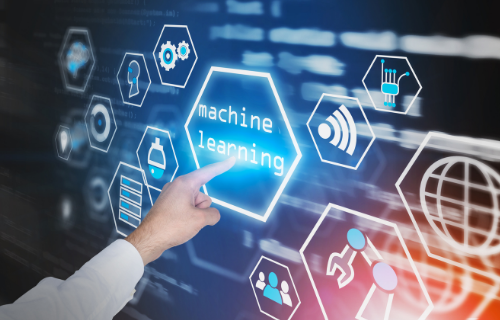Difference Between Machine Learning Bias and Variance
We live in a world where algorithms are everywhere and many of us use them, maybe even unaware that that an algorithm is involved. To solve a problem on a computer, we need an algorithm. Machine learning depends on a number of algorithms for turning data sets into models. Bias and variance are the two fundamental concepts for machine learning. It is important to understand the two when it comes to accuracy in any machine learning algorithm.

What is Bias?
The prediction error for any machine learning algorithm can be broken down into three parts – bias error, variance error, and irreducible error. Bias is a phenomenon that occurs in the machine learning model because of incorrect assumptions in the machine learning process. Bias is like a systematic error that occurs when an algorithm produces results that are systematically biased due to some incorrect assumptions in the machine learning process. They are assumptions made by a model to make the target function easier to learn.
High bias means the error in training as well as testing data is larger. It is always recommended that an algorithm be low biased in order to avoid the problem of underfitting. Let’s say you have picked up a model that cannot derive even the essential patterns out of the data set – this is called underfitting. So, simply put, bias occurs in a situation wherein you have used an algorithm and it does not fit properly.

What is Variance?
Variance is the change in prediction accuracy of machine learning between training data and test data. If variation in the dataset brings in a change in the performance of the model, it is called a variance error. It is the amount that the estimate of the target function will change if different training data was used. The target function is assumed from the training data by a machine learning algorithm, so some variance in the algorithm is expected.
Variance depends on a single training set and it determines the inconsistency of different predictions using different training sets. Low variance suggests small changes to the estimate of the target function with changes to the training dataset, while high variance suggests large changes to the estimate of the target function with changes to the training dataset. Machine learning algorithms with high variance are strongly influenced by the specifics of the training data.
Difference between Bias and Variance
Meaning
– Bias is a phenomenon that occurs in the machine learning model wherein you have used an algorithm and it does not fit properly. This means that’s the function used here is of little relevance to the scenario and it’s not able to extract the correct patterns. Variance, on the other hand, specifies the amount of variation that the estimate of the target function will change if different training data was used. It says about how much a random variable deviates from its expected value.
Scenario
– Bias is the difference between predicted values and actual values. Low bias suggests less assumptions about the form of the target function, while high bias suggests more assumptions about the form of the target function. The instance where the model is unable to find patterns in the training set is called underfitting. Variance is when the model takes into consideration the fluctuations in the data. The model performs well on testing data and gets high accuracy but fails to perform on new and unseen data.
Machine Learning Bias vs. Variance: Comparison Chart
| Bias | Variance |
| Bias is a phenomenon that occurs in the machine learning model wherein an algorithm is used and it does not fit properly. | Variance specifies the amount of variation that the estimate of the target function will change if different training data was used. |
| Bias refers to the difference between predicted values and actual values. | Variance says about how much a random variable deviates from its expected value. |
| The model cannot find patterns in the training dataset and fails for both seen and unseen data. | The model finds most patterns in the dataset and even learns from the unnecessary data or the noise. |
Summary
Whatever model you have, it should be a perfect balance between bias and variance. The goal of any supervised machine learning algorithm is to achieve low bias and low variance. However, this scenario is not possible because both are inversely connected to each other and it is practically impossible to have a machine learning model with a low bias and a low variance. Unlike bias, variance is when the model takes into account the fluctuations in the data and even the noise. If you try to alter the algorithm to better fit a given dataset, it may turn to low bias but will increase the variance.
What is bias and variance with example?
Bias in machine learning is a phenomenon that occurs when an algorithm is used and it does not fit properly. Some examples of bias include confirmation bias, stability bias, and availability bias. ML algorithms with low variance include linear regression, logistic regression, and linear discriminant analysis.
What are the 3 types of machine learning bias?
Three types of bias are information bias, selection bias, and confounding.
How can machine learning reduce bias and variance?
It is impossible to have a machine learning model with a low bias and a low variance. To minimize the bias in machine learning, you can choose the correct learning model or use the right training dataset.
What are the four types of bias in machine learning?
Four types of bias include selection bias, outliers, measurement bias, recall bias, and more.
- Difference Between Caucus and Primary - June 18, 2024
- Difference Between PPO and POS - May 30, 2024
- Difference Between RFID and NFC - May 28, 2024
Search DifferenceBetween.net :
Leave a Response
References :
[0]Kumar, Rahul. Machine Learning Quick Reference: Quick and Essential Machine Learning Hacks for Training Smart Data Models. Birmingham, United Kingdom: Packt Publishing, 2019. Print
[1]Alpaydin, Ethem. Introduction to Machine Learning. Massachusetts, United States: MIT Press, 2014. Print
[2]Bonaccorso, Giuseppe. Machine Learning Algorithms. Birmingham, United Kingdom: Packt Publishing, 2017. Print
